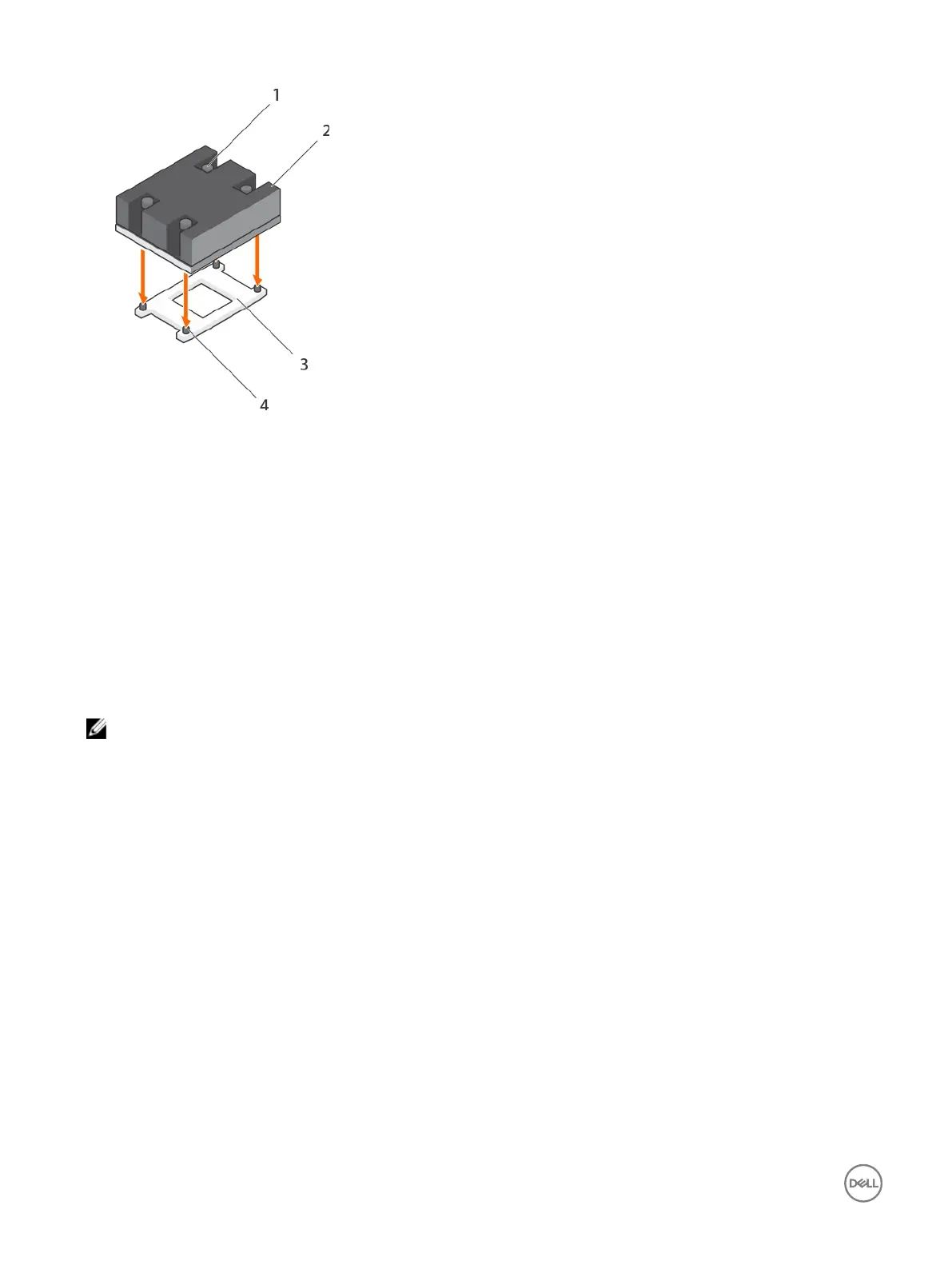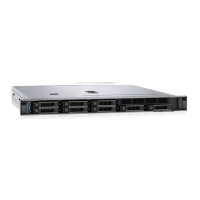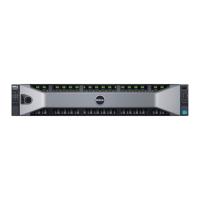Figure 77. Installing the heat sink
1. retention screw (4) 2. heat sink
3. processor socket 4. retention screw slot (4)
Next steps
1. Follow the procedure listed in the After working inside your system section.
2. While booting, press F2 to enter System Setup and verify that the processor information matches the new system
conguration.
3. Run the system diagnostics to verify that the new processor operates correctly.
Power supply units
Your system supports 350 W AC redundant power supply units (PSUs).
NOTE: If two PSUs are used, they must be of the same type and have the same maximum output power.
When two identical PSUs are installed, the PSU conguration is redundant (1 + 1). In redundant mode, power is supplied to the
system equally from both PSUs to maximize eciency.
When only one PSU is installed, the PSU conguration is non-redundant (1 + 0). Power is supplied to the system only by the single
PSU.
In a non-redundant conguration, install a PSU blank in the empty PSU slot.
Hot spare feature
Your system supports the hot spare feature that signicantly reduces the power overhead associated with power supply unit (PSU)
redundancy.
When the hot spare feature is enabled, one of the redundant PSUs is switched to the sleep state. The active PSU supports 100
percent of the load, thus operating at higher eciency. The PSU in the sleep state monitors output voltage of the active PSU. If the
output voltage of the active PSU drops, the PSU in the sleep state returns to an active output state.
If having both PSUs active is more ecient than having one PSU in the sleep state, the active PSU can also activate the sleeping
PSU.
The default PSU settings are as follows:
116

